Text

"Marking the one hundredth anniversary of the discovery of Tutankhamun’s magnificent tomb, its incredible treasures are revealed as never before.
In 1922, after fifteen years of searching, archaeologists finally discovered the tomb of King Tutankhamun. There, buried alongside the king’s mummy, they found more than 5,000 unique objects, from the mundane to the extravagant, from the precious to the everyday. Tutankhamun’s spectacular gold mask is justifiably famous, but the rest of the treasures remain largely unknown, their stories untold.
In this rich and beautifully illustrated work of history, renowned Egyptologist Toby Wilkinson allows one hundred artifacts from the boy king’s tomb to speak again―not only for themselves, but as witnesses of the civilization that created them. A gold-decorated chariot reveals the impressive scale of Egyptian technology. Loaves of bread, baskets of fruit, and jars of wine hint at the fertility of the Nile Valley and the abundant feasts enjoyed by its people. Ebony and ivory from Nubia and a jewel of Libyan desert glass show the range of Egypt’s trading and diplomatic networks. Shaving equipment and board games provide a window into the everyday lives of the people. And perhaps most poignant of all the objects in the tomb is one that conjures up a lost world of human experience: Tutankhamun’s silver trumpet.
Through these treasures, Wilkinson bring us face-to-face with the culture of the pharaohs, its extraordinary development, its remarkable flourishing, and its lasting impact. Filled with surprising insights and vivid details, Tutankhamun’s Trumpet offers an indelible portrait of the history, people, and legacy of ancient Egypt."
— Tutankhamun's Trumpet: Ancient Egypt in 100 Objects from the Boy-King's Tomb, by Toby Wilkinson
47 notes
·
View notes
Text
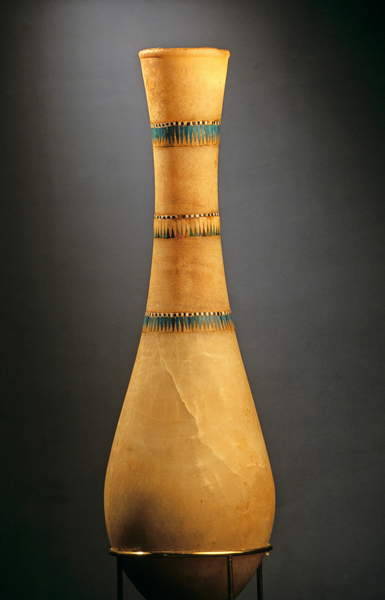
Tutankhamun Tall Vase Inlaid with Faience
A brownish residue from a perfumed oil was found inside this Egyptian alabaster tall vase from the Tomb of Tutankhamun. Oils, essential for rituals, were highly valued. The Tomb of Tutankhamun contained various artifacts, including perfumed oil vases.
This vase was discovered during the excavation of his tomb in the Valley of the Kings in Egypt. It is believed that the vase was used to hold perfumed oils or other aromatic substances, which were commonly used in ancient Egyptian rituals and for personal grooming.
New Kingdom, late 18th Dynasty, ca. 1332-1323 BC.
Tomb of Tutankhamun (KV62), Valley of the Kings, Thebes.
To be in the Grand Egyptian Museum. GEM. 70
Read more
32 notes
·
View notes
Text

Amenhotep I or Ramesses II wearing the Khepresh
This striding statuette of a New Kingdom king, depicts the king in a kilt (shendyt) adorned with an elaborate belt, a usekh collar around his neck, and most notably, the "Blue Crown of War", known to the Egyptians as the "Khepresh" upon his head, which is given a realistic glisten by the addition of rounded blue faïence.
The statue is often associated with Amenhotep I, but others, including the Louvre, where this statue now resides, label this piece as Ramesses II. This may be confusing, but it was not uncommon for kings to reuse or usurp relics from past monarchs, in fact Ramesses II is very well known among scholars for his usurping of past monuments and statues, especially those made during the reign of king Amenhotep III.
However, a further reason for this confusion when it comes to identifying this piece may or almost certainly comes from the deification of Amenhotep I within the Deir el-Medina region, where this piece was found.
Both Amenhotep I and his mother Ahmose-Nefertari became deified after their deaths. Ahmose-Nefertari outlived her son by approximately a year at the least, and became worshipped alongside her son for centuries after. Therefore, depictions of both Amenhotep I and his mother Ahmose-Nefertari are found in tombs and among other types of relics and funerary items dating from much later from their life-times. Thus, explaining statues and other depictions of either of the two dating from later king's reigns.
Read more
99 notes
·
View notes
Text
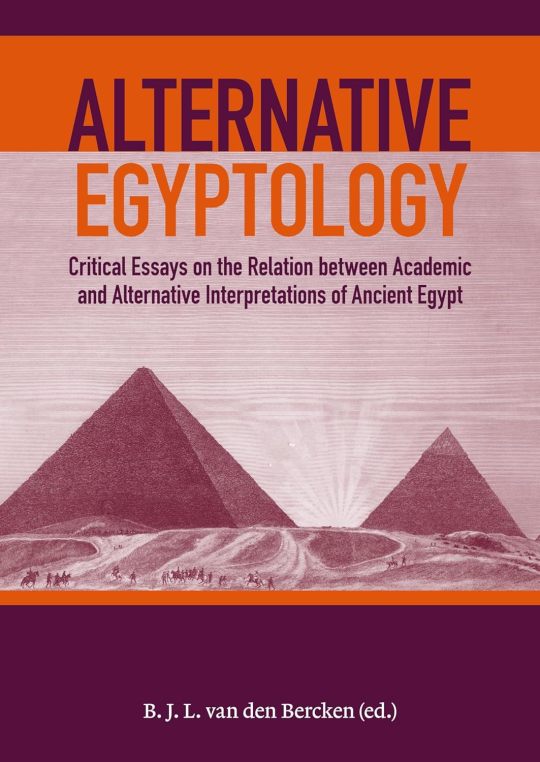
"From a mummy on board the Titanic to the pyramids’ alignment with the stars, from psychoactive mushrooms to the lost realm of Atlantis: alternative interpretations of ancient Egypt, often summarized as ‘alternative Egyptology’, have always focused on subjects that others shunned. Ever since the birth of scholarly Egyptology with the decipherment of the hieroglyphic script two hundred years ago, alternative interpretations and imaginative theories have flourished alongside it. They intertwined with egalitarian and spiritual tendencies in society during the nineteenth and early twentieth centuries, when ancient Egypt inspired countless mediums, artists, and movements from freemasonry to the Hermetic Order of the Golden Dawn. More recently alternative interpretations have inspired comic-book authors and nationalist Chinese bloggers.
It would be a mistake, however, for academics to simply view these alternative theories as fantasies that are best ignored. Their lasting popular impact needs to be assessed and (publicly) addressed by Egyptology, but they may in fact also open up fresh perspectives for research. The contributors to this volume critically explore various aspects of ‘alternative Egyptology’, assessing its impact on society and scholarship, and finding ways for Egyptology to relate to it."
— Alternative Egyptology: Critical essays on the relation between academic and alternative interpretations of ancient Egypt, by Ben van den Bercken
59 notes
·
View notes
Text

Mummy of King Tutankhamun in his Tomb (KV62), Valley of the Kings, Thebes.
Tutankhamun's face, when finally revealed, had a "serene and placid countenance", recognisable from his monuments.
New Kingdom, late 18th Dynasty, ca. 1332-1323 BC.
Photo: Kenneth Garrett
Read more
53 notes
·
View notes
Text

Amulet of a Papyrus Column, Wadj
Third Intermediate Period, ca. 1070-656 BC.
Height: 6 cm; diameter: 1.9 cm.
Now in the Art Institute of Chicago. 1892.209
Read more
17 notes
·
View notes
Text

A detail of painting of one of three musicians from tomb of Nakht (TT52).
New Kingdom, 18th dynasty ca. 1421-1372 BC.
Sheikh Abd el-Qurna. Thebes.
283 notes
·
View notes
Text

Seated Couple: Mentuemhat's Ancestors
Late Period, 26th Dynasty, ca. 664-525 BC.
Tomb of Mentuemhat (TT34), El-Assasif, Thebes.
Now in the Cleveland Museum of Art. 1949.493
A deceased vizier, whose name ended in Nufer, and his wife seated before a table of offerings. Presumably they were relatives of Mentuemhat. The work is in the style of early 18th Dynasty.
Mentuemhet is one of the most recognizable nonroyal names from ancient Egypt. He was a rich and powerful mayor and priest of Thebes and Governor of Upper Egypt who rebuilt the city after the Assyrians destroyed it.
Read more
98 notes
·
View notes
Text
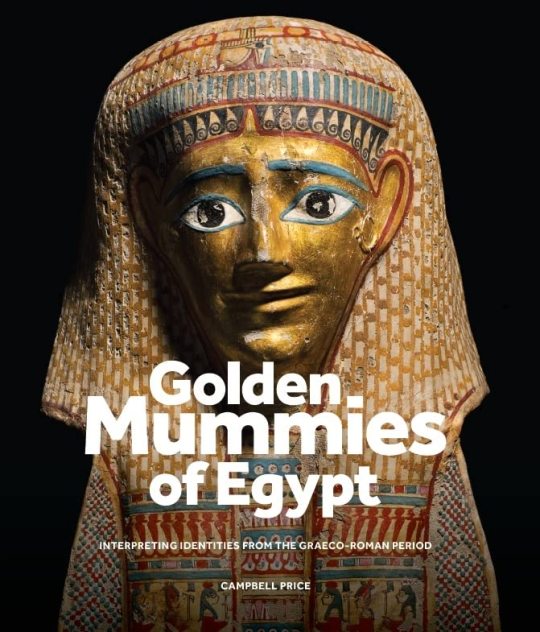
"Golden Mummies of Egypt presents new insights and a rich perspective on beliefs about the afterlife during an era when Egypt was part of the Greek and Roman worlds (c. 300 BCE–200 CE). This beautifully illustrated book, featuring photography by Julia Thorne, accompanies Manchester Museum’s first-ever international touring exhibition. Golden Mummies of Egypt is a visually spectacular exhibition that offers visitors unparalleled access to the museum’s outstanding collection of Egyptian and Sudanese objects – one of the largest in the UK.
This book is the first major publication based entirely on Manchester Museum’s Egyptology collections. It explores the Graeco-Roman Period of Egyptian history, asking to what extent our modern image of Egypt as a land of gold, sex, art and death is representative of ancient concerns and realities."
— Golden Mummies of Egypt: Interpreting identities from the Graeco-Roman period by Campbell Price, Julia Thorne
14 notes
·
View notes
Text

Portrait of Queen Tiye
New Kingdom, 18th Dynasty, c. 1391-1353 B.C.
From Medinet el-Gurob.
Now in the Neues Museum, Berlin. ÄM 21834, ÄM 17852
Read more
45 notes
·
View notes
Text
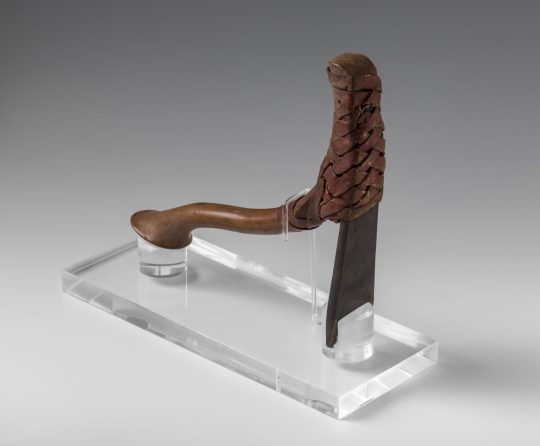
Axe with Kha monogram
New Kingdom, 18th Dynasty, ca. 1425-1353 BC.
From the Tomb of Kha (TT8), Deir el-Medina, Thebes.
Now in the Egyptian Museum of Turin. S. 8386
Read more
15 notes
·
View notes
Text

Léon Belly (French, 1827-1877)
Femmes fellahs au bord du Nil
292 notes
·
View notes
Text
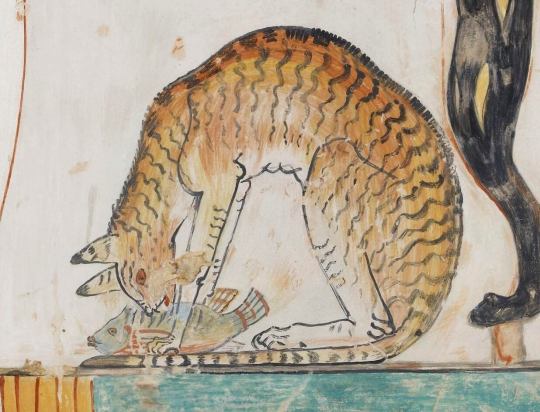
Cat feasting on a fish under the seat of Tawy, wife of Nakht
New Kingdom, 18th dynasty, c. 1401-1391 B.C.
Tomb of Nakht (TT52). Sheikh Abd el-Qurna, West Thebes.
Now in the Ashmolean Museum.
Read more
55 notes
·
View notes
Text
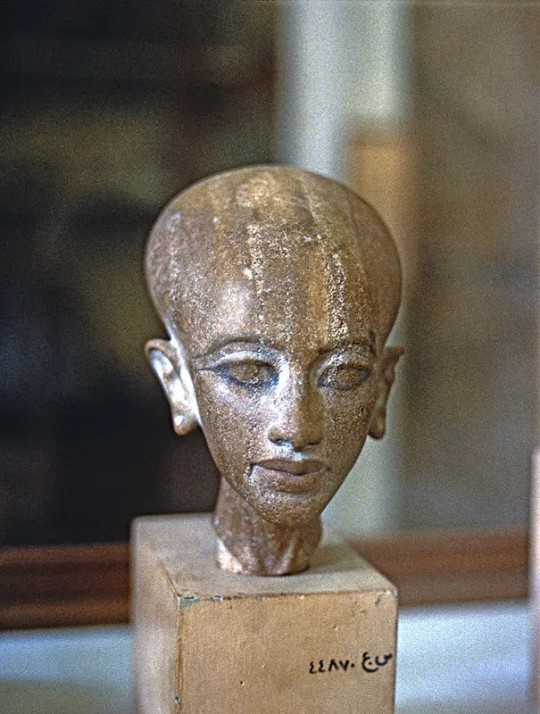
Head of Amarna Princess, probably Meritaten
New Kingdom, 18th Dynasty, ca. 1353-1336 BC.
From studio of sculptor Thutmose at Tell el-Amarna.
Now in the Egyptian Museum, Cairo. JE 44870
Read more
85 notes
·
View notes
Text

Darius dressed as Pharaoh of Egypt
Beneath a winged sun-disc, Darius I (521-486 BC) is depicted as pharaoh, offering to the jackal-headed god Anubis. The goddess Isis stands behind, shown wearing cow-horns.
The hieroglyphic labels identify the three figures, with Darius written out in phonetic hieroglyphs within the oval cartouche - a motif traditionally reserved for Egyptian kings and Queens.
Late Period, 27th Dynasty, ca. 522-486 BC.
Now in the British Museum. EA37496
129 notes
·
View notes
Photo
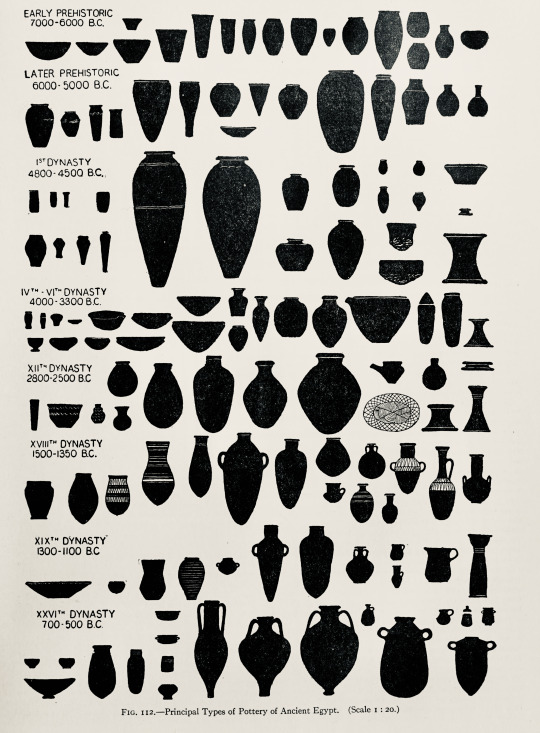
Fig. 112. “Principal types of pottery in Ancient Egypt.” The Encyclopaedia Britannica. v.9. 1922.
Internet Archive
4K notes
·
View notes
Text
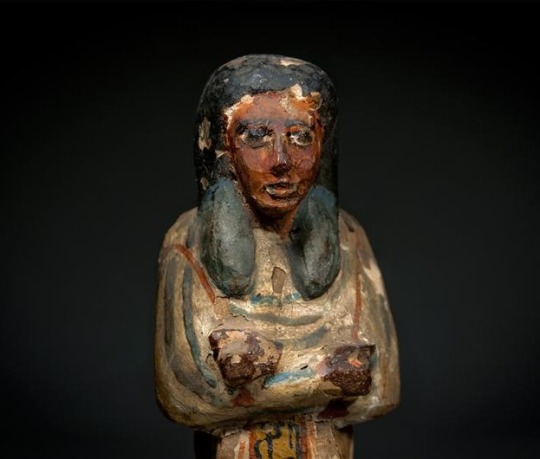
Ushabti for Lady Anhai, Chantress of Amun
The image is striking because it shows the young Anhai as she is being led to the afterworld even though she retains her youthful vigor and beauty. The powerful story of the beautiful Anhai on her journey to the afterlife was well known to ancient Egyptians, which is why this funerary figurine was made in her image.
Figurines such as this one were known as ushabti, which were placed in tombs and were intended to act as protectors of the recently deceased. This wooden ushabti was meant to represent Anhai herself, both in tribute as well as to appeal to the young priestess for a safe journey to the afterlife.
New Kingdom, Ramesside Period, 20th Dynasty, ca. 1100 BC.
Ex collection A.E. Davis. Now in the Private Collection.
Read more
38 notes
·
View notes